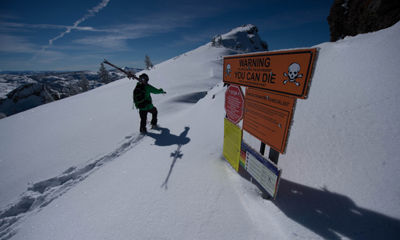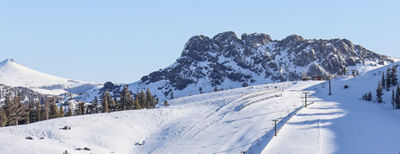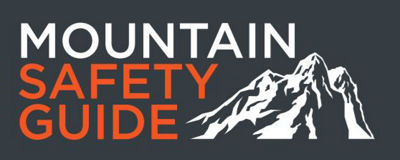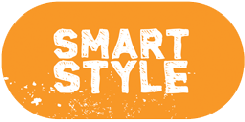Fire Danger
Smoking is prohibited on lifts and is only allowed in designated smoking areas. Report fires immediately via cell or on-mountain emergency phones.
Sun Protection
The Sun’s rays are much more intense at altitude. We recommend sunscreen with a sun protection factor of 15 or higher as well as eye protection.
Lightning and Thunderstorms
Afternoon thunderstorms are common in the mountains. Take proper precautions when you see or hear a storm developing: Seek shelter, keep off ridgelines, and stay clear of chairlift houses, lift towers, power lines, open spaces, lone trees and signposts. Lifts may close on occasion, causing delays.
High-Altitude Environment
If you live at a lower elevation, you may tire more easily. Take it easy at first, plan short trips until you are acclimated and drink plenty of water. Some visitors may experience symptoms associated with Kirkwood’s high altitude. Symptoms may include headaches, nausea, and dizziness, loss of appetite, restless sleep, coughing and difficulty in breathing. If symptoms persist or if you have a concern about your health, you should seek medical attention.
Adequate Clothing
Be aware, mountain weather changes quickly and there is usually at least a 10 degree temperature difference from the bottom to the top of the lifts. Bring a raincoat and consider a sweater or fleece.
Lift Safety
Under the law, you cannot board a lift unless you have sufficient physical dexterity, ability, and knowledge to negotiate or to use such lift safely or until you have asked for and received information sufficient to enable you to use the lift safely. You may not use a lift when under the influence of drugs or alcohol. Please lower the bar when riding lifts.
Weather and Terrain
YOU ASSUME THE RISK of unpredictable weather, as well as rugged, uneven, irregular, and slippery conditions.
Multi-Use
Be aware that trails and roads on Kirkwood Mountain Resort are used for many purposes during the summer. Mountain bikes, hikers, horses, motorized vehicles, construction equipment, and others may be encountered at any time.
Construction Warning
You may encounter construction equipment, maintenance vehicles or other heavy machinery at any time. Always be cautious and obey posted signs and warnings.
Mountain Biking
Helmets and sturdy shoes with good tread are recommended at all times. Child carriers or tow-behind bikes are not permitted and all bikes must have two working brakes. All loose clothing, bags or packs should be firmly secured so they do not interfere with the bicycle’s moving parts.
Mountain bikers must always yield to other non-motorized trail users. Should you encounter hikers or horses on any trail, you must yield the right-of-way. Ride on designated trails only and obey all posted signs and warnings. Failure to do so may result in lift ticket and/or pass revocation.
Wildlife
Do not litter or feed wildlife. Hikers rarely encounter bears but, if you do, please remain calm and back away slowly. Kirkwood asks that everyone is cautious and respectful of wildlife.
NORBA Code
All Kirkwood mountain bikers must obey the NORBA Code.
- I will yield the right-of-way to other non-motorized trail users
- I will use caution when overtaking another and will make my presence known well in advance
- I will maintain control of my speed at all times
- I will stay on designated trails
- I will not disturb wildlife or livestock
- I will not litter
- I will respect public and private property
- I will always be self-sufficient
- I will not travel solo in remote areas
- I will observe the practice of minimum impact bicycling
- I will always wear a helmet whenever I ride
Responsibility Code
Mountain biking involves elements of risk that common sense and personal awareness can help reduce. Please adhere to the responsibility code, and share a safe experience with others.
- Ride in control and within your ability level. You must be able to avoid other people or objects.
- Stay off the lifts and trails if your ability is impaired by drugs, alcohol or fatigue.
- All riders must wear a helmet and gloves. Other protective equipment is strongly recommended.
- Inspect your bike or have it checked by a qualified bike mechanic before you ride.
- Be sure to have the physical dexterity, ability, and knowledge to safely load, ride, and unload lifts. Ask the lift attendant for assistance if you need it.
- Be aware of changing conditions on trails and features.
- Inspect features before use and throughout the day.
- Stay on marked trails. Obey all signs and warnings. Do not cut switchbacks. Keep off closed areas.
- Avoid riders ahead of you. They have the right of way.
- Look uphill and yield to other riders when entering a trail or starting downhill.
- Do not stop where you obstruct a trail or are not visible from above.
- If you are involved in or witness a collision or accident, you must identify yourself to the Bike Patrol.
- Do not feed, provoke, or approach wildlife.
- Help prevent the spread of invasive species by washing your bike before and after each visit.
- Do not pick flowers. Leave them for others to enjoy and to seed future growth.
KNOW THE CODE—be safety conscious. It is your responsibility. Park privileges will be suspended for breach of this code.





